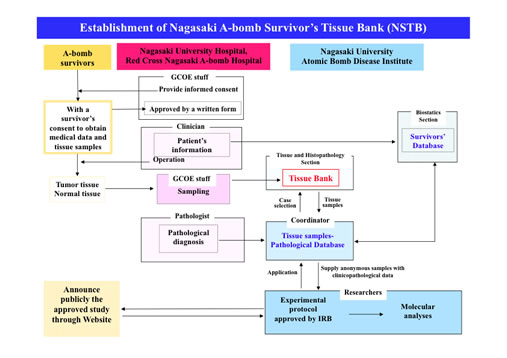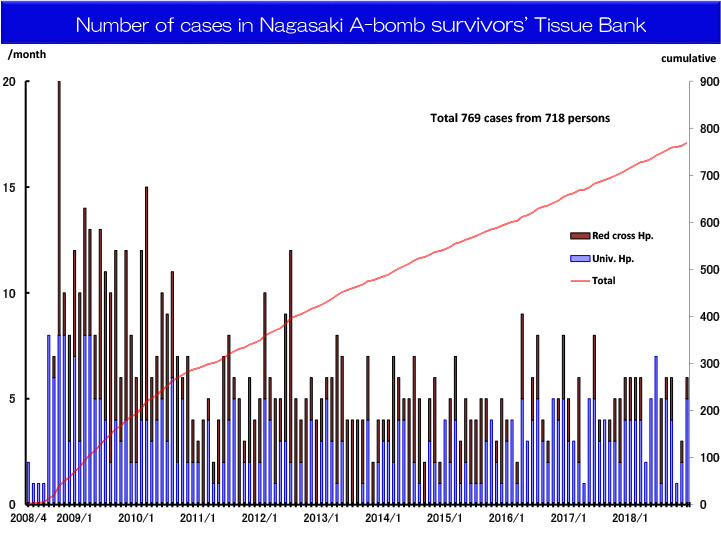| |
 |
|
| |
Seventy years have elapsed since 2 atomic bombs (A-bombs) were exploded on Hiroshima and Nagasaki, Japan on August 6 and 9, 1945, respectively. An increased risk of cancer has continued for decades, and the incidence of certain types of cancer still is higher than the incidence in controlled populations. Although it has been suggested that a long-lasting radiation effect contributes to tumorigenesis in A-bomb survivors, to date, the molecular mechanisms involved are not fully understood. We recently described a higher incidence rate of multiple primary cancers in A-bomb survivors, particularly for those who were exposed at a younger age and at a closer distance to the hypocenter. Thus, a higher risk of cancer still persists in survivors. Tissues from survivors who potentially show a higher susceptibility for cancers are also considered as valuable biomaterials to throw light on long-lasting radiation effect. Biomaterials of survivors are usually preserved as several formalin-embedded paraffin-embedded tissue blocks, but, there is a limit to the comprehensive analysis since nucleic acid fragmentation.
As one of A-bomb disease medicine project of Nagasaki University Global COE program “Global Strategic Center for Radiation Health Risk Control”, we have established the tissue bank for cancers which were freshly resected from A-bomb survivors together with information on the A-bombing and medical data since April 2008. The process of collecting is as follows (Figure.1) : The experimental protocol was approved by the Ethics Review Committee of The Japanese Red Cross Nagasaki A-bomb Hospital and Human genome/Genetic Analysis Research Ethics Committee of Nagasaki University, respectively. The population used in this bank was confined to A-bomb survivors’ patient who undergoes a lumpectomy in the Japanese Red Cross Nagasaki A-bomb hospital and Nagasaki University hospital. Plans for delivery and gene analysis of excised tissue, and information of circumstances at the time of exposure, will be described with reference to documents, we first obtain the consent. If consent was obtained, we will listen to exposure situation, family history, and treatment history, and then compile a database. Both tumor tissue and the surrounding normal part which removed by surgery are collected and stored as frozen samples. Other clinical information and frozen samples are all made anonymous. 769 cases fresh frozen tumor tissue from survivors have been collected by the end of December 2018 (Figure.2). In this bank, the proximal distance cases who were exposed within 2km from the hypocenter, which appear relatively strong effects of radiation, accounted for 94 cases (13.1%). As the site of the cancer, 152 cases of breast, 158 cases of lung, 122 cases of colon, 86 cases of stomach, 80 cases of liver, 60 cases of thyroid, and 37 cases of rectum in descending order, are collected. 181 cases as multiple cancers also are included.
The establishment of A-bomb survivor’s tissue bank will enhance the global collaboration and contribute to understand the late health effects of radiation at molecular level, finding a key to the prediction, prevention and treatment of carcinogenesis as a late radiation effect.
 |
 Click to Enlarge Click to Enlarge |
 (PDF-41KB) (PDF-41KB) |
 |
 Click to Enlarge Click to Enlarge |
 (PDF-54KB) (PDF-54KB) |
|
|
| |
|

